(first posted 3/29/2013) As a child of the nineties, I feel blessed to have grown up in a decade of so many breathtaking car designs. I naturally feel a small wave of nostalgia every time I see one of my favorites. One of those cars is the Dodge Intrepid. When the LH cars (Chrysler Concorde, Dodge Intrepid, Eagle Vision (CC here) came along in 1993, they completely changed the automotive landscape, signaling the end of the K-car and the beginning of Chrysler’s newest fad for the next decade: Cab-Forward.
Now I’m sure we all remember the proclamation of “Cab-Forward” in every single piece of literature and commercials Chrysler used to advertise these cars. But just what exactly did it mean? Well, it’s exactly what it sounds like: The passenger cabin was moved forward to the point where the windshield started over the front wheels. With all four wheels pushed out toward the corners, overhangs were reduced and passenger space was increased.
Short hood and long deck. Steeply raked front and rear windshields. Large lower air intakes. Wind-cheating profile. In its day, the Intrepid looked like a true four-door sports car.
The origins of the LH design date back to the 1987 Lamborghini Portofino concept by Kevin Verduyn. Given its mid-rear engine (from the Lambo Jalpa), cab-forwardness was essentially a given. Translating it to a FWD family sedan was another matter.
The LH’s design inspiration may have come from the Portofino, but its underpinnings had a more prosaic starting point: the Renault 25. The largest sedan built by Renault, it had the typical Renault north-south, ahead-of the-front-axle engine layout that would carry over to the LH.
In between the 25 and LHs was the AMC Premier (later the Eagle Premier/Dodge Monaco), which AMC’s Francois Castaing had shepherded through development and put into production at AMC’s new Bramalea, Ontario plant. When Castaing came along to Chrysler from AMC after its acquisition, he determined that the new LH cars would be based on the Premier/Monaco and built at Bramalea.
Prior to the AMC acquisition, Chrysler had been developing a new large, FWD car; penned by Hal Sperlich, it supposedly looked like a Dynasty on steroids. That project was tossed aside in favor of Castaing’s plan to base the LH on the Premier. The engineering mules were built up from Premiers, and although many details of the final production LH were, of course, changed, its R25/Premier origins were impossible to hide under its sleek new exterior.
Naturally, the LHs were treated to a new engine, the OHC 3.5-liter V6, as an upgrade over the base OHV 3.3-liter V6. At the time, this was an ambitious program, since mass-production V6 engines of this caliber (214 hp) were hardly common.
Of the three LH cars, the Intrepid sported the most futuristic styling, with its grille-less front end, blacked-out C-pillars, smoked-lens full-width taillights, and lack of brightwork. Sorry, no Intrepid Broughams here, although a front bench seat was optional.
With no Plymouth variant, the base Intrepid was the least costly LH, and thus the best seller of the trio. Why it was thought that an Eagle variant would be more profitable than a Plymouth, I’ll always wonder. I firmly believe that Plymouth still had a chance in 1993, but that’s an issue for another day.
Intrepids are one of those cars that always catch my eye. Every time I see one, I can’t help but laugh, thinking of the commercials I remember for the 1998 second generation.
As a kid I used to imitate the big, booming voice that proclaimed, “Dodge Intrepid. This Changes Everything!” As I was driving through a parking lot, this candy-apple red Intrepid caught my eye. Thanks to the gold alloy wheels, I immediately knew it must be an ES. I circled back around for a better look.
As I was driving through a parking lot, this candy-apple red Intrepid caught my eye. Thanks to the gold alloy wheels, I immediately knew it must be an ES. I circled back around for a better look.
Other than the minor scrape on the front fender, the body is in good condition. From the pictures, you can tell the paint has faded a bit, but this is a twenty-year-old car, and it looks much better than the peeling paint on many other Chryslers of this vintage. Apparently the “21-step paint and finishing process” highlighted in the 1996 Intrepid brochure was no match against time.
Although not the most memorable Dodge in the minds of people today, at the time of its introduction, the Dodge Intrepid and its siblings were game changers, that spearheaded Chrysler’s 1990s renaissance. The first in a series of expressive, forward looking designs, the Intrepid truly changed everything.















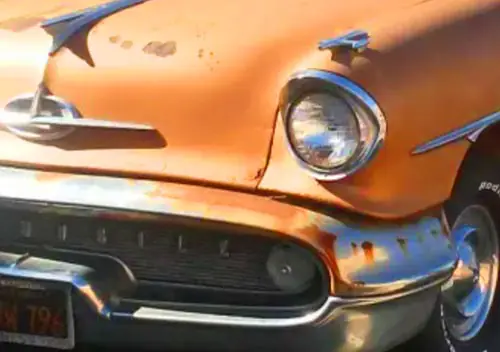
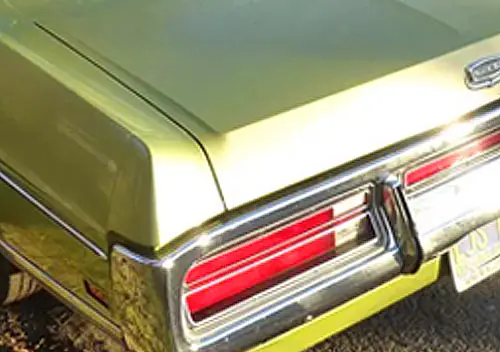
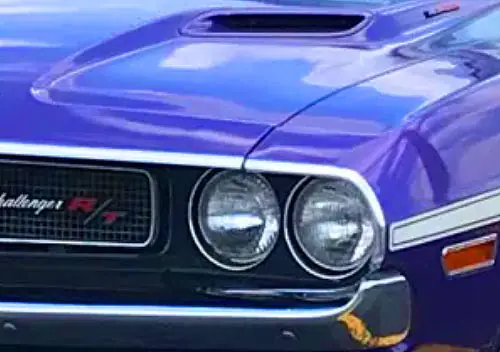


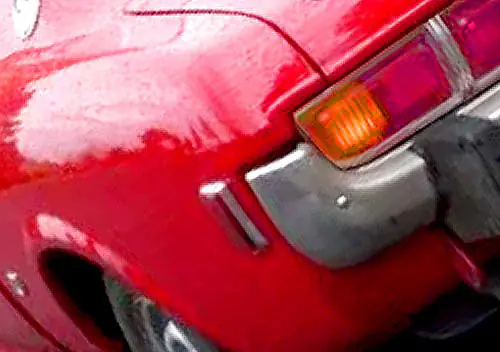
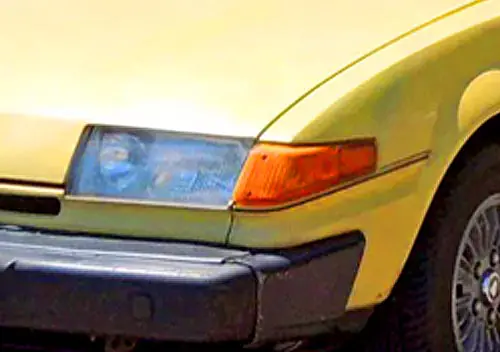

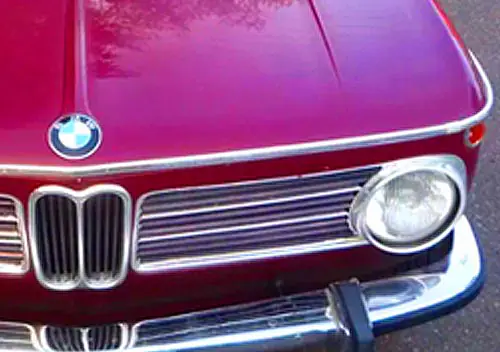
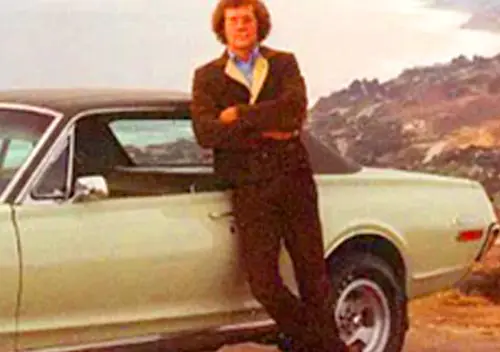

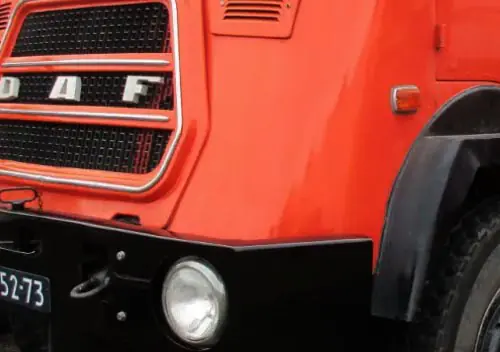
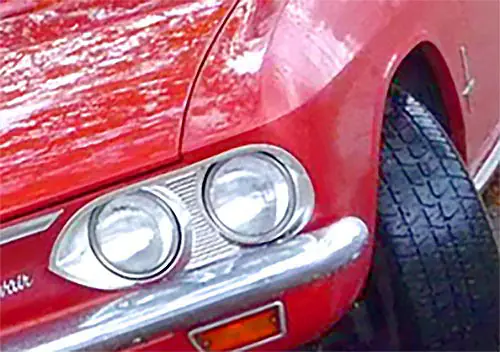
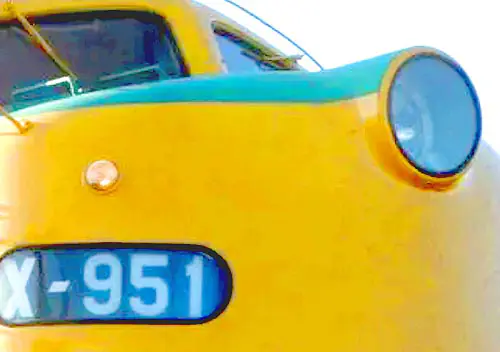
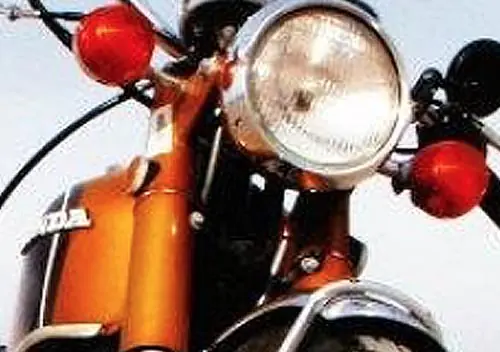
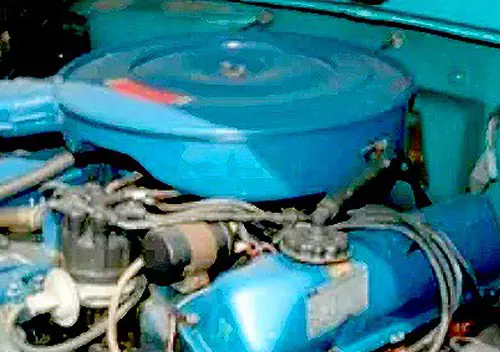



It is hard to underestimate the impact that these cars had on car design but also within Chrysler itself. Chrysler history can broadly (and somewhat over generalized) defined as falling under four schemes: Old Chrysler (prior to 1981), K-Car Era, LH Era, LX Era when a single design basically underpinned virtually everything of significance. The LH cars also marked the end of Iacocca’s heavy handedness in design and influence as he stepped down as CEO around this time. As it was mentioned in the article, a lot of AMC influence is felt in this car so much that the entire Chrysler engineering staff was reorganized to reflect the AMC model upon acquisition rather than the other way around.
I always thought these cars were much better than the second generation versions from 98-02. The 3.3/3.5 were generally good motors, unusual in their longitudinal placement rather than the traditional transverse FWD placement.
The Eagle brand was created to basically develop the remnants of AMC designs and was thought of as being positioned somewhere between Dodge and Chrysler rather than as the economy brand like Plymouth. Unfortunately it fell sort of like Desoto and Edsel quirky mid-priced brands without a real purpose. I suppose Eagle was supposed to target more of an import buyer since those models tended to emphasis performance, handling and marketing.
The only major complaint that I have with these cars (and the subsequent Chrysler product ones in general) is that their new plastic design became notorious for discoloration and weak light output. I could never really understand that as even with design changes and the use of upgraded light bulbs (like Sylvania SilverStars) the problem has persisted.
“As a child of the nineties, I feel blessed to have grown up in a decade of so many breathtaking car designs.” I think only a younger person could get away with saying that… 😉
I always assumed Eagle existed purely to put product in former AMC showrooms, buying the manufacturer and the dealers time to arrange mergers and/or reconfigurations as Chrysler-Plymouth-Jeep dealers.
A lot of bad decisions by the Big Three over the years can be traced to their efforts to placate their dealers.
JPC called it a DeSoto 2.0 in his Eagle CC: https://www.curbsideclassic.com/curbside-classics-american/curbside-classic-1993-eagle-vision-desoto-2-0/
Still have one! Was my parents, now I use it for college along with my Cordoba. 1997 runs great with 120,000 and only routine maintenance. Beautiful car!
Even though IMO the first generation was not as good as the second, I have always liked the looks of these cars. You could tell that Chrysler was onto something different.
BUT… I still wonder, how much of the difference was real, and how much was merely aesthetic? i.e., compared to what was being more generally practiced, was the cab (which I take to mean the entire passenger cabin) moved forward, or merely the windshield? Does anyone have some real-world dimensions that prove the case?
The LHs had a 113″ wheelbase; the Taurus 106″. There’s no question that the real difference in interior space came from the extra wheelbase length. Pushing the windshield forward was 90% aesthetic, 10% increased feeling of extra space in front of your face.
It was the latest styling fad, kind of like Chrysler’s “Forward Look” in 1957. Notice how it went away with the LX cars. Although pushed forward windshields have become almost ubiquitous in many segments, like small/tall cars, etc..
So not really cab forward, then?
Well remember, it was primarily AMC veterans that led this design team. Those AMC guys were notorious tight-knit and loyal so when these cars hit the boards around 89-90 many of them probably did time on the Pacer. So, interestingly, in a way an argument can be made that these cars took the design paradigm that was attempted by the Pacer into a more functional package.
No they were pretty much a windshield forward design.
The LH was also nearly 4 inches wider than the Taurus. I cannot find it quickly, but I would suspect that the front and rear track were significantly wider as well. The Intrepid struck me as an unapologetically big car in 1993, but a modern one.
I think the recent Honda Civics have followed this Cab-Forward aesthetic. I’m not crazy about it myself; the only real advantage to a steeply-raked windshield is better impact resistance to all those infernal stones thrown up by trucks on certain roads here. Otherwise, one gets a small hood with hidden extremities, the Greenhouse Effect of all that glass here in the Sunbelt, & the huge dashboard accompanying it.
That steeply-raked windshield is a serious boost to gas mileage. Aerodynamics matters, it’s money in the pocket and carbon in the ground.
The 1st-gen LH Eagle Vision’s drag coefficient is a very good 0.31, while the 2nd-gen LH Chrysler Concorde has an excellent 0.288, nearly the same as today’s Chevy Volt. (Wikipedia)
If one drives at full Interstate speeds often, yes, I appreciate that drag matters (it increases with speed²). But if most driving is in town or @ boulevard speeds (like many freeways at rush hour), not so much. And while I care about efficiency, carbon doesn’t concern me.
So is that why in 2013 1/2 the larger mid-full sized sedans On Market today Look like variations on an Updated Dodge intrepid or Chrysler Concord
with more Chrome and More features
But looks have not /SHAPES have not changed much since 1998
Shades of 1957’s “The New Look Forward”…….trend setting, but poorly executed. At the time I thought it was better executed than the new ’96 Taurus. I knew someone who had a new Chrysler 300M and I thought it was a handsome car.
What exactly was their Achilles Heel?
One Achilles heel was definitely the “limp home” four-speed automatic. My brother had a Concorde, and he would have loved it if it didn’t need a dozen trips to the dealer due to transmission problems.
But that wasn’t unique to the LH cars. That automatic was in the minivans, too, and probably many other Chrysler vehicles.
Well the Ultradrive was the only 4-speed transmission in FWD cars that I am aware of, even making it into my 99 Eclipse (hard to dismiss the distinctive noise it makes when shifting out of park into reverse) but fortunately I never had to do anything to it but change the screen and fluid. The limp-home mode was when the transmission detected a problem it would freeze in second gear until the car was shut off.
Achilles Heels would be a better description of the LH:
-The A604 was a nightmare.
-The brakes were undersized, warped and shuddered, rarely lasting more than 20,000 km here.
-ABS controllers failed all the time.
-Airbag failures were common.
-The car was never designed for a V-6 and the manifolds of the 3.5 cooked the steering gear, which was ON TOP of the strut, Renault style.
-The “cab forward” configuration made many services difficult, ie battery changes.
-The air intake was so low the cars could gulp water on wet days and ruin the engine.
-The suspension components were designed to fail at 60,001 km and they did so right on schedule.
-The a/c evaporator was so bad it would start leaking at 60,001 km. Seventeen hours to replace it since the dash had to be pulled.
These cars sold well for the first three years, while they were still under warranty. This was NOT a good car to own for more than three years.
All of the above.
As a Mopar homer I was predisposed to like these things. I was a new dad in the late 90s, needed something big and cheap, so I bought one that was, whadya know, three years old a bit under 50k, felt good. Within a year, it started eating tie rods and rotors and the A/C failed. When I tried to get that fixed, the tech pointed at the other LHs filling up his bays. The motor mounts must have been made from Play-Doh. I couldn’t tell if the junk suspension was making that worse or vice-versa.
MIne was the same color as the feature car. Turns my face this color just looking at it. There’s a reason beige inherited the earth. Hell hath no Fury like a homer scorned.
I recall reading various complaints (in period reviews and later online) that the HVAC on these cars was kind of anemic in general, even when in good repair.
As I have stated before, this ‘hard to change battery’ was not an issue in all LH cars. Just look at the picture above, the battery is plainly visible. It was just as easy to replace in my `96 LHS.
The HVAC in my LHS worked beautifully, even at 130k. As always, YMMV.
You were indeed fortunate, Jordan. I made a lot of coin selling evap coils for the LH.
Aweful car don’t see many around that should give you a hint. Many have already gone to the bone yard.
I disagree most of these comments. I worked on plenty of Chrysler LH cars over the years (Intrepid, Vision, Concorde, New Yorker, LHS).
Perhaps the commenter was confusing the LH cars with some other.
The car was of course designed for the 3.3L and 3.5L V6 engines from the start (no 4-cylinder), so that comment is wrong. There is also plenty of room in the engine bay. And no, the battery is not hard to replace. It is right up front like on most cars of the time. ABS controllers did not go out frequently. Some ABS relays were bad (a cheap fix). The 3.5L manifolds did not “cook the steering gear.” The rack and pinion cylinder was in back and above of the engine, two feet from the exhaust manifolds (which also had heat shields over them). The air intake was not low, it was at the side above the front right wheel (at least on the 3.3L). The suspension components were not designed to fail at 60K; I’ve seen them last 100K in regular service (with the exception of the inner tie rod ends – see below). The brakes were not “undersized;” the rotors, pads, and calipers are comparable to any other mid-size car’s brakes of that time. Airbag failures were not common.
The LH cars were called “game-changers” by reviewers at the time. They were very roomy inside, but with about the same turning radius as comparable cars with less interior room. The handling was very good for a large sedan. Very attractive styling for the day. Very affordable in the base versions.
I found the first generation LH cars very easy to work on, especially if they had the very reliable and prooven Chrysler 3.3L engine. And since it was mounted like a rear wheel drive car (as opposed to transversely like most front-drive cars), it was easy to get to everything to work on. Yes, the 3.5L engine had some problems and TSBs, but the 3.3L was near bullet-proof.
All the suspension parts were easy to replace. The underside of the cars was easy to work on also. If you maintained the car with oil/filter changes, transmission fluid/filter changes, and all the other required maintenance, they were fairly reliable compared to other U.S. cars of that time.
The actual problems, quirks they had were:
-Several annoying technical service bulletin (TSB) problems for the ’93-’95 cars on minor things like gaps in the weatherstrip, door hinges making noise, water drips in the trunk, etc. These were all easy to fix, and Chrysler sometimes would cover them at the dealer. However, they gave the car a reputation for quirks and Chysler should have paid for all of them.
-The original air conditioning system (’93-early ’95) had a defect, which was handled by a TSB parts replacement and extended warranty from Chrysler – to 70K or several years as I recall.
-Handling was good, but the inner tie rod ends would wear in rough service due to the inner tie rod length. In regular service they would last at least 60K miles, but needed to be checked periodically when the car was regularly aligned per the maintenance schecule (well-publicized TSBs on this, known by any competent mechanic). Some people ignored obvious loose steering caused by the tie rod wear, and drove until the bushings failed, which could cause loss of steering (and an accident obvioiusly). The inner tie rod ends could be replaced easily in about 1/2 hour if you knew what you were doing. And several companies (e.g. Moog, Delco) made a repair kit to just replace the rubber or poly bushings. Preventative maintence on them was just to replace at 60K.
-Crank & cam sensors needed preventative replacement at about every 30K miles, or the car could stall. An easy, cheap, known repair by honest mechanics.
-The early 42LE versions of the A604 transmission had problems with leaking seals. Not a “nightmare,” but obviously you had to pull the transmission to replace the seals with the new design seals. Chysler only covered *some* of these repairs on customers who were persistant (and knew about the TSBs). This was poor customer service, since it was a known, obvious defect. The transmission itself was reliable with fluid/filter changes *and* when using the right transmission fluid. Some shops continued to use the old fluids, which would cause rapid failure.
By 1995-1997, most of these problems had been addressed, so those cars were fine. However, unfortunately Chrysler decided on a significant redesign (with a poor base engine) for 1998 (the ” second generation”). These cars had a new set of problems and quirks, which started the troubleshooting and TSB process all over again.
Good write-up. Ever since going Honda/Toyota in the late ’80s, I’ve usually been apathetic about domestic cars, & Chryslers before that ever since their quality tanked by the mid ’70s. Just as with Brit/French/Italian makes, it breaks my heart see so much technical competence ruined by a refusal to take customer morale seriously. It takes *many* years to build a good reputation, but only one or two bad years to destroy it.
I figure if Toyota can get away with selling a mediocrity like the Corolla (which isn’t even getting top marks in CU reliability stats), surely the domestics could do at least as well IF they fanatically pursue quality control, instead of lurching between rotten & good over the years as they have. They don’t even have be as technically sophisticated either; in other words, bring back the Valiant!
And a pet peeve with all carmakers: please stop re-inventing the iPad in the dashboard. Apple et al. do it better, don’t even try.
Not enough time to read at work, but I like the Monaco inclusion. We had one years ago and it was one of the smoothest and comfy cars at the time. Had some issues when it racked up the miles (~200k) later on of course though. Loved riding in that car.
~Dolr
FWIU the Premier/Monaco was a good car with a bad engine, the PRV V6 which I’ve nominated as a Deadly Sin in itself. In fact, the only reason the Monaco existed was to gain an extra few marginal sales and use up a few more of the PRVs that Chrysler was contractually obligated to buy as part of the original AMC deal.
A very nicely done piece. I still recall stopping by a Dodge dealer one evening after hours and seeing my first Intrepid, in that greenish color shown in the last picture. Wow – a big change from the Dynasties and Spirits that Dodge had been feeding us.
These cars seem to have been better than the next generation, as they were largely done before Robert Eaton came on board and began his ambitious cost cutting efforts. One area that was a victim to cost cutting was the air conditioning. I recall reading that because of the large glass area, engineering had called for a much higher capacity air conditioning system than normal, and that the cost accountants had won the day, resulting in substandard a/c on really hot days.
It is also odd to see a picture of these with clear headlight covers. I recall that even when the covers were crystal clear, those headlights were far from effective. But they sure looked cool in 1993.
A sister in law drove one of these for a long, long time, getting nearly 300K out of it. I drove it a couple of times near the end of its life, and it was still a strong runner. That 3.5 V6 engine was a good one. It is a shame that the 2.7 that followed (that was supposed to be based on the 3.5) was such a turd.
In all fairness, every failed 2.7 I ever saw had not been properly maintained. The oil change interval was 3 mo/ 5000 km and it was impossible to get buyers to do it. We even had to phone customers to get them in but to no avail. The problem would have been solved with synthetic oil but there was a tremendous bias against such oil on those days.
The 3.5 and the 2.7 have nothing in common, by the way.
Another issue with the a/c is that this car came out just before the changeover from R12 to R134a.
I had an Eagle Vision that exact color as a company vehicle for three years and loved it. Fast, comfortable and quiet, it made the Tauri and Luminae in our parking lot look 10 years old overnight. I put well over 100,000 miles on it without a problem.
The 1996 Chevy Blazer that took its place? Let’s just say the list of problems outnumbered the options.
Chrysler gets lauded for the amount of profit they were able to make on each car back in the ’90s. One look at the Intrepid and I have to wonder if that profit came from shrewd development or simply awful quality. When it comes to the Neon, I can overlook the quality shortcomings, but with the Intrepid, it’s a lot harder. Even when they were new, I could tell how shoddily constructed they were, and I was only 10 when they were introduced. They had really soft seats, warped air bag covers and casting flash on every hard piece of plastic. Paint peeled off of them in gigantic sheets before the cars turned ten themselves. Furthermore, I thought these cars to be rather unattractive. The overhangs were in fact rather long, owing to the need for a large trunk and the longitudinal engine placement. The cars’ styling did nothing to hide this and in fact, accentuated it. The huge panel gaps did no favors in this department.
It really is a shame, though; I think longitudinal front drive makes a lot of sense if the overhang isn’t too long and judging from how the JA sedans and the Neon rode and handled, there’s every reason to assume the LH sedans were just as excellent. Nevertheless, if I wanted a sedan with a huge back seat which was fun to drive, I’d have purchased a Passat-which at least didn’t LOOK as unreliable as it was-or a Maxima.
That’s what gets me: In a nation where consumer psychology is pursued so doggedly, suits in the car biz can’t grasp the simple notion that buyers might shun cars with lousy fit & finish. Or else, maybe they think their customers are too clueless to notice.
I suspect that those folks in engineering orgs who see this get thwarted by fool Dilbert-type managers.
Wow, I asked for this CC yesterday and here it is!
As a proud owner of a 1st-gen ’87 Sable, when I saw the first photos of these cars in the early nineties they knocked me out. LH wasn’t so much a response to the Taurus/Sable, it was the next chapter. The Intrepid was on Car and Driver’s Ten Best list for 1993, 1994, 1998 and 1999.
I especially like your story on how LH came to be. I sort of knew that but you’ve made it much clearer for me. The Premier/Monaco has always caught my eye as a subtle but beautiful bit of architecture. Interesting that the acquired AMC platform and organization prevailed – that happens in mergers sometimes. So in other words, this is the 1995 Nash!
I still see quite a few Intrepids and Concordes around. Just this morning saw an Intrepid getting tires at the Goodyear store.
Too bad they didn’t sell better. All that space! Exciting “21st century” design (or so we thought). Was it the trannys? Weak dealers? The SUV/pickup onslaught? What?
OK, now I’d like the ’87 Celica GT fastback, in blue, for tomorrow’s CC please.
“OK, now I’d like the ’87 Celica GT fastback, in blue, for tomorrow’s CC please.”
This is Curbside Classic, not Burger King. You do not get it your way. 🙂
Unless, of course, you make it yourself. 😉
The very first new car I ever test drove was a 1993 Eagle Vision ESi with the 3.3L V-6. I was working on a senior year English paper comparing the K-car’s importance to Chrysler in the 80s to the LH’s (anticipated) importance to the company in the 1990s, and that provided good cover for me to arrange some time with a salesman for a test drive at Quality CPJE.
I loved all iterations of these cars, including the second-gen… but they were pigs when it came to build quality, and the little touches that made the imports special then. I still remember the feeling of the loose carpeting over the left front wheel housing as it was crushed under my foot. Honda thought to include a dead pedal there on my Dad’s Accord; the Eagle needed one.
In 1993 my mother had grown tired of shifting her Dodge Omni and wanted something bigger. They looked at the Mopar offerings and almost settled on a new Dynasty (yikes!) when Mom rented a ’92 Sable by chance and fell in luv with it and bought a new ’93 Sable LS (whew, but I got a nice four year old gently used Omni for a high school graduation present). I thought the Sable was a nice car, until one day in 1995 Dad traded it for a new end-of-model-year white Intrepid ES with the gold wheels and the 3.5 V6. Wow. I loved that car, it was the best car I’d ever driven (when they let me drive it). I still miss that car, especially when they replaced it with a wallowy base 1998 Concorde with that putrid 2.7 V6. Talk about a letdown, which still causes me to have a bias against the second gen LH cars.
Were these good cars? I really really don’t get the appeal. I guess when the predecessor is a k-car anythings an improvement. But really, didn’t Ford do this design language (better) several years earlier with the first Taurus?
A coworker had one of these in the mid 2000’s. Seemed like a bucket. He was ecstatic to replace it with a 2001 Civic coupe.
I do admit to kind of liking the 300m, which I think is a later iteration of this design. Still, really nothing special other than being a Chrysler that’s not a total POS (besides minivans).
We owned a 1996 Intrepid with the 3.5L motor. It was a rocket compared to anything I had owned since my avatar. Ours was white w/white vinyl-coated (“padded”) wheels, gray interior and was extremely sharp.
Bought slightly used in January, 1997 with 16K miles, it was near-perfect, which was good, as our 1993 Spirit’s (yes, we owned one of those, too, alongside our Acclaim) tranny (V6, Ultra-you-know-what) was giving up the ghost and kept going into limp mode, well, wifey got busy and found the one we wound up buying – on the coldest day of the year, in the snow, too!
I always marveled at how the car appeared to be as wide as it was long, and how it would turn on a dime!
Traded it in on the last Chrysler – our 1999 Stratus.
Our Intrepid was a stunningly beautiful car and a delight to drive and travel in. This was wifey’s car – I had the Acclaim.
A lot of my photos from the 1990s have disappeared, includung my car photos. I’m still searching, but afraid they’re gone.
P.S: Anyone notice in the top photo how the curb appears to be going right through the car’s front end?
Not until you pointed it out. Wow, that’s a great angle.
Zackman, you and I have both had a few of the same cars. I now drive a 2005 Impala LS and my parents had both a 94 and a 96 Concorde!
There were so many headlines and articles on these that you would think they were the second coming. Ultimately the LH cars were found to be more flash than substance. Not as bad as the Neon but the novelty on both wore off quickly.
The windshield-forward design stayed in style five minutes, a pretty big miscalculation on Chrysler’s part. You see that happen in a lean organization with more enthusiasm than wisdom. I mean was there ever a more about-face than between the Chrysler Concorde and 300C? One had the fastest windshield around the other so stiff you couldn’t see a stop light in front of your face.
The look through the windscreen was unpleasant and unnatural, like on a 90s Camaro. The front seat legroom was terrible for such a huge car. Very roomy rear seat but what’s the point of that when the driver is uncomfortable?
The handling was good but man were these things noisy. The engine was “right there”, all the time. The large wheels and low profile tires looked good but transmitted road noise like crazy.
The cloud cars were more restrained, better styled and stayed fresh for a long time. Chrysler applied that learning to the last LH, the Chrysler 300M, which was a pretty car that sold well. It helped that the M wasn’t so large; people who needed space were into SUVs not full-sized sedans.
Ironically the thing that made Chrysler so profitable around that time, and coveted by Daimler, was the just-modern-enough Dodge Durango. It was the first mid-sized SUV with style and power. Made the Explorer look like a minivan.
My town is awash in Buick Centurys and LeSabres but I never see a similarly aged LH on the road and am wondering, on top of the design and engineering shortcomings, what the problems were with the durability.
All of that said I would stop and give a dark green Intrepid a second look if I saw one in a parking lot.
As another child of the 90s I remember being enamored by the Intrepid simply because the front end looked like the Viper. That is a very important selling point to a 5 year old car enthusiast!
The transition from the very square Dynasty to the sleek Intrepid was a shock. Once the LH cars came to market it seemed like every vehicle suddenly got much older.
I wasn’t as fond of the 2nd generation Intrepid as it looked bloated. I remember looking at how massive the bumper cap was in the rear and thinking how expensive it would be to replace if you got rear-ended.
The 1998 Chrysler LHS was my favorite design from the 2nd generation. The design of the grill over the front bumper was beautiful and something we see so much of lately (I think Audi was the 2nd manufacturer to do the same thing).
I remember my first ride in an Intrepid and noticing the casting flash issue amongst some other quality problems. If you look at the 8th photo from the top (the picture of the interior) look at what has happened to the cover on the passenger’s side airbag. It’s become quite warped.
I still admire these when one drives by. One thing, it seems like every other Intrepid I see is in that taupe/green color shown in the bottom photo. This was a new fad with vehicles at that time – a paint that changes colors depending on how the light hits it.
I find it interesting that the left headlight of the car in the photo lined up with the curb so perfectly, and matched its color so well, that at a glance it looks like the curb goes through the car. An amusing coincidence!
Haha, I didn’t even notice that when I took the photo. Thanks for noticing!
My first drive in one of these came in 1996, right after my little brother got a brand-new one as a company car (same color as the pictured one)….We went out to lunch together at an In’N’Out next to the freeway in Auburn, CA, after lunch he tossed me the keys. I started it, pulled out of the lot, onto I-80 Westbound and punched it – 10, 20, 30, 40, 50, 60 (at which I point I remarked “Wow, this pulls great”), 70, 80, (“Hey, what’s that in the rear-view”), 90 (“Dammit, that’s a CHP), 80, 70, 60, 50, 40, 30, 20, 10, full stop on the shoulder. 10 minutes, one lecture and a ticket later, walked around the car, handed the keys back to my brother and said “you can drive it home.” Nice drive while it lasted though.
I have personally blown up 2 2.7 engines without trying. One was returning from a repair shop that said it was ready to blow .. the other time I was moving it around to another parking place. This was at a dealership that I work at. My boss knows to never buy another 2.7 @ auction.
“Say what you will about Chrysler build quality, they had some great designs in the 90s. And it all started with the Intrepid. It changed everything.”
The sentence that pretty much sums up Mopar products from that era and even today. Great design means nothing when your plastic console has cracked in freezing temps or your rubber window moldings start to come loose after less than a year. Or the AC leaks and seizes up. Great design tempered by shitty quality is just that, nothing more.
Hey, it’s a little bit cheesy, but it’s nicely displayed.
I’m sorry, I hate to rain on the parade here, but in the nineties there was only one Chrysler choice – the Imperial. I don’t know much about its underpinnings (exagerrated K-car?), but it is a beautiful car.
1993 Chrysler Imperial: (wallpaper)
Those long, narrow, funny-looking things? Please!
(ymmv)
Definition of “cab forward”: front wheel wells protrude further into cabin. Hey, Chrysler: feet gotta go somewhere! I guess management figured another twenty million in rebates would get the bipeds to buy anyway.
Also, about those “bean counter” references. Cost accountants do not make decisions; they simply keep score. Oh, a harsh cost projection may inspire a short-sighted manager to choose inferior parts. But when the accountants’ warranty claim numbers come in, the bigger boss can then exact accountability upon the pointy-haired crowd. I say “can,” because it doesn’t seem to happen very often.
Cheaping out on product now = More earnings this quarter = Higher stock price and better bonuses now.
Warranty expenses now = That was the last guy’s fault.
Warranty expenses next year = See this golden parachute? Hasta la vista, baby!
I remember these cars appearing even from the other side of the world – then after the motor show pictures disappeared so did any experience of the cars. Didn’t miss much then it seems…
Not sure I would want to be a rear seat passenger though, the roofline finishes right over the seat implying poor headroom and a baking from the rear window, and the pillar hindering entry & exit.
The top of the rear window has a graduated opaque shading that reduces the sun problem.
I find the hate here interesting; mostly it seems to settle around questionable reliability (a good reason) and dislike for the style, the “package.” Oh-kaaay…
Never owned one; but I liked how it looked. And I wasn’t the only one; these things were selling. Did they bring about Chrysler’s second Golden Age in twenty years? Someone would have to crunch the numbers; but it’s rare when a family car becomes the image car for a brand.
And I think it was a big-time FAIL when Daimler rejected the whole package in favor of cast-off Mercedes platforms. True, the 300 and clones sold well for a few years; but the only thing new about them was that they weren’t based on the Cloud Cars. The few who rejected FWD now had a new full-size car to price out.
Had someone with imagination, instead of delusions of superiority, made the call…the LH cars could have been reworked for higher reliability and fuel economy…a model right in line with the tightening CAFE standards. An evolutionary car…something that can grow and perfect. As opposed to an obsolete Benz product with new sheetmetal, run for some years and then dumped.
+1
Speaking as a Service Advisor for Chrysler, the LX was a waaaaaaaaaaaaaaay better car than any LH ever produced. They were quite reliable, drove well (after they figured out how to align them), had lots of power and were roomy. In fact I would recommend a used one to someone who wants a big RWD car.
I wouldn’t recommend an LH to anyone.
Okay. I can see how from your perspective it would look like a good product.
Not unlike how, to the cab company manager where I once drove, the Granada looked like the “perfect” car.
Better-engineered? Probably…if you mean proven to hold up. I have a problem with viewing front-engine/RWD as “better.” It’s an archaic compromise from a long-past era, where it was the only cost-effective option.
Hold up better? Sure; it ought to. It was obsoleted Mercedes design.
But, more potential? I think not. First, the RWD setup results, right off, in about an eight-percent loss in power and thus efficiency. The driveline weight and inertia; the sliding hypoid gears in the rear end.
Better handling? If designed for it. RWD is not a guarantee of good road manners. Just compare a Maverick with the VW Rabbit, the original German one.
That the LH cloud-cars didn’t work well out the door, was a problem and a glaring error on Chrysler’s product-planning department. But things can be CORRECTED. The original Volkswagenwerk Type 1 didn’t do so well in tests, either…there was a hot debate within the governing body, whether to ditch Porche’s design in favor of something else. (of course, a certain political officeholder had absolute veto power on that decision)
So, where did the LX take Chrysler? Forward…into the 1970s.
I hate driving the LX cars because they are impossible to see out of due to their high belt line.
And they seemed to start the ‘high belt line/small window” look that seems to have taken over. Reason enough to hate them. They’re a giant step backward in passive safety since it’s harder to see the dangers around you.
In 1997 my parents got a 1994 Concorde with the 3.3 off lease. It was a very nice car and my mom liked it. In 2002 a friend of ours who sold used cars had a 1996 Concorde LXi that had only 34k and the price was great. It only lacked a sunroof. The old one was blue and the newer one was that pretty dark green. A few years later the car was passed on to my sister and I. We got rid of the car with almost 150k and only because we no longer had a use for it. I worked at a used car as the lot gopher and my boss rode in the car once. He was very impressed with how nice it still was. The leather was some of the best leather that I’ve ever been in and the leather in my Impala isn’t as nice…
An uncle of mine had one of these for a short while when I was 5-6 years old. I quite liked it for many reasons. The exhaust note was just plain lovely (it sounded like a cross between a Buick 3.8L/3800 V6 and a Dodge Neon (DOHC) motor), it’s ride was smooth yet engaging & responsive, & it’s cabin felt roomy, airy, and comfy. I would like to own one (that hasn’t already had the $#!£ beaten out of it, for that matter).
Oh, this is funny…the Intrepid’s spokesperson was Mr. Edward Hermann.
As JustPassinThru mentioned, I’m a little disappointed to hear stuff bandied about these cars when the person making the negative comments never even owned or drove one. Would prefer hearing people’s own experiences and impressions of cars they’ve owned and driven rather than repeated popular beliefs and opinions, such as in regards to Neon quality or 2.7L engines. FWIW, I still see many first gen Neons being daily driven. Also, I’ve owned two second gen Intrepids with the 2.7L and had zero problems with the engine. Admittedly, have seen some non-running Intrepids on Craigslist that need engine replacements.
Now back to the first gen LH cars, I greatly liked them for their clean, sleek, aerodynamic styling. And, I agree with Brendan that the Intrepid in ES trim looks very much like a true 4-door sports car, or at least an American sports sedan. Always had thoughts of owning a nice used first generation Intrepid, until the second generation arrived and I found I liked that even better. Currently have a co-worker with a clean, decent first gen Intrepid with not much over 100K miles. Also, another co-worker with a first gen Concorde with close to 150K miles and a bit more wear and tear and in need of a few things, yet still in running condition
Last summer a first-generation Intrepid turned up abandoned in the parking area at the park where we go to walk in the woods. It was dusty and there were no water stains on the driver’s seat in spite of the fact that the driver’s window was down, indicating that it had sat in a carport or garage rather than outside. Visually it was in nice shape inside and out with only slight fading of the metallic blue paint. I suppose that the transmission had given out as that seems to be the major weak spot.
I live fairly close to a
garbage dumprecycling facility, and a number of cars have been abandoned nearby. Most of these are pretty ratty with body damage, with parts missing, and with the interiors filled with garbage. But not that Intrepid – its owner wasn’t p-o’d at it, just wanted it gone.Seems a waste.
No matter how big a POS a car might be…if it’s in good shape there’s a market for its parts. Of course, there could be another story to it – such as its having been stolen for a joyride, or a contested title (never paid off the note) or other legal folderol.
But to just walk away from a car…hell, my Yugo with a destroyed engine, still got me $200. Money I wouldn’t have had if I’d done what I wanted and burned the car in the middle of the street.
I found a ’97 Intrepid on ebay with bench seats!
I found a 95 Intrepid with bench seats in my garage!
Yup. I’ve had it since 1998.
Late to the party, as usual.
Like others have mentioned, this thing was a complete breath of fresh air when it arrived on the motoring scene. I can remember car magazines advance announcements (a year or two before release) of what these cars would be like, I never imagined they would end up looking like this.
They were real spaceships and the Dodge one was plenty nice, but I was in love with the Eagle Vision. Back when JPC did his review of the Vision, I noted I would have loved one, but hated the idea of having two small kids in a car that expensive (for the times).
Coincidentally, two of my siblings had some example of a LH car, my sister had an Intrepid in exactly the same livery as the last photo in the post. She ran that car about 250K miles (AFAIK) with no major issues, gave it to my one nephew who ran it several more years before he moved to Europe. My BIL, who was 6’4″ had no problems fitting in the car, in fact the amount of interior room was why he purchased it. My brother had a 2nd gen Concorde that he owned for a decent amount of mileage (I no longer remember) with minimal issues. I love Mopars, but the QC was sure hit or miss. My family has been lucky, I guess.
One of my daughter’s friends had one of these up until recently, and it gave up a tie rod end at a most inopportune time. But, for a 16 year old car at the time, it had held up rather well to Michigan’s corrosive environment. I still see a few of these in daily service, but the odds of a nearly 20 year old family car still being on the road are getting slimmer every day. I still see more Chevy Luminas (of that age and purpose) than anything else around here, but we did have a couple of GM facilities around here up until recently…
I was not a fan of the 2nd gen LH cars, something about them seemed like a less than stellar effort. Not that there weren’t some gems in there, namely the Chrysler 300M. As I understand it, that car was originally to be the 2nd gen Eagle Vision. A co-worker has a 300M Special and even now it is a gorgeous car. One of those would be in my MM garage for sure.
I remember, too, when these were introduced and thought they had really nice lines. I still see an Intrepid or Stratus on the road and think the styling held up really well. They marketed these things as revolutionary new designs but I guess they really weren’t because the cab forward marketing lingo just disappeared. Just, I happened to like these cars, at least the exterior styling anyways. Compared to many of the imports and what GM was producing at the time, I found these to be kinda sexy for what that’s worth. Not your grandparent’s Chrysler or maybe a continuation of the time when Chrysler’s were kind of sexy.
I only ever saw LH Chryslers in magazines – except for a lone 2002ish 300M that Chrysler brought out here for the national motor show. I think the LH cars look fantastic – especially the Gen II.
Hard to believe they came out 20 years ago! They are so much more modern looking than the LX I think (I like the LX a lot too though). Stylistically it almost seems like the LX was from 20 years ago, and was replaced by the LH. Slap a new interior in the LH, update some of the exterior details and I reckon it’d sell well today. Provided it gained substance to match the style!
My Grandmother had a 95 white base model, and my dad had a 97 base model in deep cranberry, or as we called it purple. By 97, the base model had more cladding to make it look like an ES. I remember my grandfather saying how much he hated them because they didn’t have a single piece of chrome on them. He was forever the tinkerer and never bought a new car, he’d see something he liked on the side of the road and pick it up. After he brought it home, he’d change the hubcaps and add all kinds of silly reflectors, pinstripes and even extra badges he took from the junkyard to make them his own. My grandmother was much simpler, and always told him not to touch her cars.
I bought the first Base model 1993 Intrepid sold in North Carolina in August 1992 and put 60,000 happy miles in it during a four year period. Only sold it because of a divorce. I’m 6’3″, long legs short torso and to this day remeber it as the best car ever for my proportions. The driver positions were perfect for me. Passengers were awed by its comfort and interior dimensions. I also loved the great visibility.
Mine was identical to the first one shown above, except a base model, so it had (very nice) hubcaps instead of wheels. Its engine was the 3.3 V6. Only issues I had was an early fuel rail recall and then one having to do with the wipers. The inside hinge latches of the front doors had a flaw, though, whereby after a while of use would begin making a popping noise when you opened and shut them. I was told it was an easy fix but unfortunately never bothered with it. Oh, and the transmission did go into Limp Mode once, but I took it to the dealership where they replaced one sensor and sent me on my way.
Overall it was a good car, and I miss it, wish I still had it nowadays as a second car.
My parents owned a brand new 1995 Chrysler LHS. It was an amazing car, but sadly the transmission completely failed when my dad was driving in San Francisco where he worked. My dad said it was a totally nail biting experience when he went to accelerate up a steep SF hill and the transmission thumped and then the car began rolling backwards. It must have been pretty scary! The LHS only had 4000 miles on it and my dad was so totally pissed off having this happen in a brand new car. My dad’s previous car was a 1983 VW Quantum that he bought new and put 150,000 trouble free miles on. He loved the look and room of the new cab forward Chryslers, but he was so mad at the tranny dying so soon. My dad kept his LHS for three years and lots more problems and then he sold it at a huge loss. The resale on Chryslers is really awful. My dad ended up with a buying a new 1998 BMW 5 series which was so much better than the Chrysler it was indescribable. The BMW had a few minor issues that were cheerfully rectified by the dealer. My dad put around 200,000 miles on his BMW. The BMW, sadly, was my dad’s last car before he passed away in 2006. RIP dad!
Still remember driving 94 concorde with zero miles off the dealer lot in 94. What a large car inside with awesome visibility outwards n excellent build inside. Engine n transmission are still silky smooth n powerful as day one. In 2016 i still love my 94 concorde. So what wrong with these beasts ???? I think for one they overdid too much on trying to use the computer to try to save ac parts or engine or transmission etc. ::) the 3.3 engine is rock solid i must say. What they messed up was on the computer controlled software/control of the car. (my car shuts all hvac and panel off and starts blowing hot air out in defrost vents at full blower speed).( not a good limp mode as the entire car is inoperable). Basically an awesome engine transmission body and agility with poor supporting cast from computer control freaks.
Great cars! I bought a new ’96 base Intrepid, 3.3 engine and drove it 240,000 miles before selling it because the tranny was crapping out. I’d never have sold it at 240K if it hadn’t sustained severe hail damage that rendered it monetarily unwise to spend $2K for the transmission, since it could never be worth much looking like it did.
Best car I ever owned. The only thing I remember replacing before 225,000 miles, when I had to put a new alternator on it, was a starter.
In 1993 I purchased a chrysler intrepid Es , Canadian Intrepids were not marketed by Dodge as in the USA
This was one of the worst cars I had ever owned due to all the reasons listed above
Several years after I had sold the car I had a nightmare that it was in my driveway again
I was assigned my one of these as my GOV and drove it for about 2 years. Had the 24 valve V-6 which was strong and peppy. Very roomy, it was a decent ride and fine highway driver. Handled well with the HD police suspension. Big negative was cheap, plasticky interior, with a steering wheel that for some reason always felt slimy. Tried a variety of cleaners on it, bit never could get rid of that greasey feel.
These were such great cars, I’m a tiny bit less enthusiastic about their successors, yet the few (very, very few) times I have run across one it has had HUGE mileage on it. I am saying that as someone who would like to own, or at least drive, a low mileage/pristine example.
A co-worker had one of these and replaced it with the newer model, which I thought looked a bit swollen.
Yes, the interiors looked like they were where Daimler-Chrysler cut corners, and after buying and living with one of these cars that would probably have bugged me. But, with the right optional extras, and the right engine….I’m not sure if I would have cared.
We rented one of these in the early 90’s on a trip to the Bay Area. As I recall, it was an impressive driver… for a Chrysler.
Great piece, Brendan – I missed this one the first time around. I’m dying to know what that “Dynasty on steroids” shelved proposal looked like.
Thanks Joe! This was actually one of my very first CC’s here. Hard to believe it was 5 years ago. I think I’ve grown rather well as a writer, and CC has everything to do with it!
I’m going to continue to insist there was nothing particularly “cab forward” about these cars. The cab in the LH was in the same place it was in nearly every other car – between the front and rear wheels. As for the position of those wheels being pushed toward the four corners, i dunno, that front overhang looks awfully big to me, with the wheels pushed as far as they can go in the other direction right up against the front doors just like on other FWD cars of the era. (That look that has since become unfashionable, with true short front overhangs and “rear drive proportions” being in style, as typified by the BMW 3 and 4 series coupes). The rear wheels were pushed back some compared to the K-car offshoots Chrysler had been building creating a shorter rear overhang, but again this is no different than any mid-’80s GM front-driver like the formal-roofed N-body (Grand Am etc.) or ’86 E body (Riv/Toro before they started making them longer again). Really, the only part of the cab that was moved forward was the base of the windshield, which didn’t really affect the passenger compartment except by making the top of the dashboard much deeper than before.
A truer instance of “cab forward” at Mopar would be the mid-’60s Engel designs which had engine compartments that weren’t particularly long by the day’s standards and very long trunks. That ended later in the decade with the fuselage designs that lengthened the hood by several inches and shortened the trunks (not just the trunk lid but the actual trunk) an equal amount, moving the cab backward.
I ordered a new 1994 Dodge Intrepid with almost every option and received it in August, 1993. By the standards of the day it was an excellent car and very well equipped. I was pleased with it and thought it compared very well to other larger domestic sedans.
Unfortunately my time with it was fairly short. I was 29 and had accumulated a number of speeding violations, which caused a big surcharge on my insurance. My wife and I determined that the cost of maintaining full coverage on it when combined with the payments was too high to justify, so we sold it. She kept her 1991 VW Golf Diesel and I returned to my 1970 Olds 98 and 1967 Chev CST 10. I liked the car in comparison to it’s contemporaries and have no negative recollections. I sold it in one day at a good price as well, so they were well regarded in general terms at the time.
I was the City Manager for Thrifty Car Rental during the Intrepid’s heyday. We got two rounds of cars per model year. We’d run them six months or 30,000 miles. I never noticed the poor HVAC that others mention even in Austin, TX.
My favorite was the LHS followed by the Intrepid ES.
The year of this car changed from the article’s first incarnation five years ago, to now.
In 2013 it was a 1995 model (and the catalog page shown says “1995”).
In 2018 it is a 1997 model.
And the last photo in the article has been changed (the first time around it was of a 1993 car…something Chrysler did in some of the illustrations for the 1994-1997 catalogs for the Intrepid).
And the “When You Change Everything” catalog page is from later than 1995…it includes the Intrepid Sport package.
I am too lazy to figure out which, from the details in the photos. My own 1995 Intrepid, on which I changed the oil yesterday at 103,000+ miles, is a base model with split bench seat, and undoubtedly the specified optional equipment would differ anyway.
The crease on the front fender might help identify it. The 1995 had plastic front fenders; the 1997 had steel. Chrysler apparently had problems maintaining proper fit with the plastic ones and changed them.
I’ve got a ’96 New Yorker with the 3.5 and touring suspension. 102,000 miles on the original transmission. The trick is to change the fluid and filter regularly. Great steering and road feel. Color is Platinum metallic. Beautiful car, very few left on the road.
These cars are the epitome of a lost opportunity; great products on paper, combined with horrible execution. My Dad was absolutely smitten with these upon their debut, and when the LHS came a year later he was like a fly on shit. I was horrified he would consider one at $30k, much less the $25K a Concorde sold for at the time. Yeah, the huge back seat was a plus. The 3.5 was powerful for the times. “We could road trip in comfort” was his reasoning. To this day I am thankful not long after these came out Dad recived a company car Neon; it diddnt take long for him to loose the faith he had in Chrysler products of the era. Between a stank ass A/C condenser and a leaky windshield, he soon lost that enthusiasm he had for the $30,000 LHS by witnessing how much ChryCo was willing to cost cut . He bought an Econoline Conversion Van instead (a choice I and my family highly approved).
As to the Intrepid here, it has been years since I’ve seen these on the road. The last time I can recall one was about 3 years ago in Chicago, and I was dumbfounded to see one in really good shape parked in the Gold Coast, of all places. It literally stoped me in my tracks because it had been so long since I saw one. Regardless, they have long been junkyard fodder as far as i’m concerned.
Agree, the LH’s were a hit, but didn’t last long on the roads here. Same with Mopar’s ‘Cloud cars’. Many were BHPH fodder when 3-5 years old.
LX RWD ones seem to be hanging around longer, at least.
I’m sorry, I couldn’t get past your first sentence. The only thing “breathtaking” about ’90’s automotive design was the lack of it!
I spent a few years with a ’95 New Yorker that was purchased used from the local Mopar dealer. Not my cup of tea, but it got great economy on long trips and was rock solid reliable. Decent performer, but the torque steer reaffirmed my dislike for front drive cars. It was sold to a friend with family as cheap transpo and he took it out way over 200,000 miles. The trick was to keep the thing maintained and to pay attention to the timing belts and hardware.
Honestly, I think with a 25 year later perspective, these don’t seem so innovative. Sure the proportions are slightly different and the long wheelbase provided useful passenger room. But the overall form doesn’t seem that different than a Taurus or even Camry of the time. What still seems significant, and I remember really stood out at the time, was how different these cars were from their K-car predecessors. Along with the new Ram trucks, Grand Cherokee, Neon and Viper, this really did herald big changes at Chrysler from 1992 to 1994. But the LH cars by themselves wouldn’t have been as significant without the other vehicles in the lineup. By contrast, the LX cars not only had dramatic styling, but RWD, the Hemi V8, and a resulting image (specifically the Chrysler 300) that became a cultural icon. Even though sales have dropped, it’s still around after many years, and spawned the Challenger as well, whereas the FWD LH ended up pretty short-lived.
A bastardised Renault 25? No doubt it’s what the Daimler engineers were thinking! Hence the decision to base its replacement on that old E class platform.
The LH seems less reliable, poorer build quality and materials, uglier than both inside and out than the car it spawned it.
I currently own a 96 Renault Laguna 2.0 5 speed and brought it as a temporary car till I fix the best worst car I’ve ever owned 02 Audi Allroad 2.5 tdi.
Found a receipt in the glovebox which I thought was a joke, 11 hours to change the alternator, which I later found out is actually quick.
Its a good as any period german car in quality and design and if it was a 96 AMC something as Laguna is a GM trademark I think Americans would understand why Renault brought out Nissan and not vice versa.
It still has that French clever design/retarded engineering combination, I had an engine miss that took months to diagnose after replacing several other things that made it better but didn’t cure it.
The car has no dizzy as such, has a cap that screws to the head and a rotor that attaches to the end of camshaft, smart but stupid.
Seal had gone and engine oil had seeped through where the rotor had turned it into a fine mist covering the inside with a hard residue.
Luckily I had come across this site and its CC on the Renault GTA and brought a new US made camshaft seal for an Alliance OHC motor off eBay for US$6, now runs excellent.
Thanks CC
Can we please stop with the “old E-Class platform” canard? Yes, some components were shared with existing Benz models, since it would have been wasteful to design new ones. No, the LX was not some discarded W124 or W210 platform. If anything, it was developed alongside contemporary Benz platforms. Look it up on Allpar.
It’s not your fault, but this myth on Internet forums has refused to die since the LX cars were launched 14 or so years ago.
I recall these, but not with any pros or cons. They looked sharp at the time, but Chrysler had been shunted to second class standings in my eyes after all the mergers and combos. For better or for worse, Chrysler sedans have become the home for aging platforms from their current overlords. The late and unlamented Dart and 200 used an aged Alfa platform, but I wonder if any future Chrysler sedans will be underpinned by a Fiat/Alfa/Maserati platform, or will they stop trying altogether? I can’t see Maserati lowering the brand cache by donating a platform, and the Guilia is too new. That only leaves Fiat, who has nothing that large for US tastes.
LH cars with low roofs, along with similar cars, have led to the explosion of SUV sales. Buyers want to see out of their cars better. Hitting my head of roof getting in and out, no way.
We used to get so many Intrepid owners complaining about the lack of headlights at night, notice how big the headlights got on the next generation Intrepids.
The first generation Intrepid was an attractive car back then and a well taken care of specimen is still attractive. In fact I think the design of the first gen Intrepid can hang with today’s car designs.
The Intrepid was the best looking of the first generation LH cars and I remember wanting a forest green one. They were pretty roomy
My family had a brand new Dodge Intrepid ES around 1992/1993 in its earliest years when I was only 13 or 14. I can remember how incredibly impressed I was with the car at the time. It felt like the nicest car we had ever owned, and so modern, sleek, and different for the time. All of Chrysler’s cars around that time just seemed to be knocking it out of the park, from the Intrepid, to the Neon, to the revamped Dodge Ram, to (despite its impracticality) the Dodge Viper. Even the Plymouth Prowler and the Dodge Stratus followed shortly after. But I can remember the first Intrepid really representing the first wave of all of this. The exterior of our Intrepid was a beautiful dark metallic blue with a gray trim around the base of the car. The interior was cloth, but a very nice cloth for the time, and everything inside seemed to wrap around you like a glove. Again, for the time. Another feature in our Intrepid was a very nice Infinity sound system complete with built in CD player and physical equalizer toggles that each had their own small light for visual appeal. I can still remember the CD sampler that came with the car vividly. It opened up saying “Are you ready for Chrysler? Yes! Are you ready for Infinity? Yes!” One included track on this was Mariah Carey’s “Someday”, which really shined on the system. Several years later, we traded in our Intrepid for a Chrysler Concorde. But the Concorde, despite essentially being the same car in different coverings, just didn’t have the “cool” factor that that original Intrepid had, and felt more like an old man’s car. The Intrepid was one of those cool, comfortable memories from my childhood. It made me feel like my family had really made it, was in good hands, modern, and in style. To this day I sometimes wonder where that exact car that we owned ended up, or is today. Very likely in a junkyard somewhere, which makes me sad, but it was a wonderful memory of mine in the early 90’s.
That red Fiat in the photo looks to be a Polski Fiat 126. quite common in Hungary in the ’90s. Was looking to buy an 80’s red Volga back then, as I had contemplated staying, my girl cousin advised to to buy one of these Polski Fiats instead. “No way,” I said to myself. At least with the Volga, I figured I could have adapted parts I was more familiar with.
OK 🆗 I can’t lie .your story was grate . I feel exactly how you did iv been on the hunt for one, and boy did i find the one . it’s a 1995 dodge intrepid 3.3 ES with one owner and they just passes away . God bless them. We’ll it only has 70,000 miles on it motor clean starts up like nothing. Rides beautiful. So this is my new project. It’s need some tender loving care to get back to its old self or should I say new self because it’s rare to find one with so little miles . Thanks again for sharing
Amerika Morales
So late to comment….but at any rate, I always liked the LH cars for the most part. They had a very upscale, classy look when they were new. The reliability seemed to be hit or miss though. Some had an almost bulletproof automobile that just kept on going and some had a total nightmare that they wanted to rid themselves of. My best friend’s parents had an almost grayish-purple base model that they loved and had for a very long time. I believe it was a ’94. I remember it being pretty reliable for them and it racked up close to 180k before they decided to replace it. That one was a good one. Did daily family duty with three kids for nearly 9 years with them.
My stepsister bought a 1995 ES in 2002. The car had about 80k on it when she acquired it. The car was beautiful in it’s unique Gun-metal Metallic Gray with gold accents in the alloy wheels. Nice gray leather interior with all the bells and whistles for that year. If it was my car, I would have probably wanted it to be great as well with that 3.3 engine and all, but it was not to be.
The car seemed to have issues with the transmission shortly after she purchased it. If I remember correctly, some kind of bushing in the front transmission pump wore out causing a somewhat alarming leak. The torque converter and the pump had to be replaced. After that however, the transmission seemed to shift too slowly for whatever reason. It started to take a while to engage when first starting in the mornings. Wasn’t my car though, but my dad helped her with it a lot so I remember this stuff because he wasn’t really happy with the way things were going with this car. I think she only had it about a year, maybe a little over a year. The repair bills were quickly overtaking the value of the car and it was better to just move on.
At one point, a few years later on, I seriously considered buying a 2nd gen Intrepid. I liked the look of that model and the space. I had driven a few on occasion when I helped my Stepdad at his dealership. I really liked that model, but I remember them being fairly problematic cars for the dealer. Constant electrical gremlins with several of them, transmission issues seemed to be common, and some overall questionable component quality. I decided against the Intrepid in the end, but of the 2nd gen, I still feel that the Intrepid was the best-looking of the three. The rear of the Intrepid seems to flow more organically and naturally so to speak, especially the trunk. The 300M of this generation also fits this category. The long rear window over the trunk works better than the stubby trunk and the more narrow rear that ws found on the LHS and the Concorde of the 2nd gen, IMO.
I will say they did make the models a bit more distinctive overall in generation 2 of the LH cars than Gen1. I will always applaud Chrysler for their innovative ideas. They have come up with some very interesting models that I want to love, but I personally have not had the best of luck with them. My Dad and brother are Chrysler die-hards though. Dodges and Chryslers I like to admire from afar. At one point I even considered the 2nd gen Stratus. I really liked those cars as well, but a few mechanics told me the engines were a big problem. I decided against that as well. Compelling products with questionable execution. Too bad because I really liked that Stratus interior as well. The seats were very comfortable.
I liked the Intrepid models immensely when I rode in them, I thought they were very well designed cars with many carefully thought-out details, and I thought they looked good doing their daily duties. Do I regret not purchasing one? Probably not. As I write this, I can’t even remember the last time I saw any Intrepid. Of course, I also can’t believe it’s almost been 20 years since the last Intrepid was produced! Even here in Pueblo, where there are yesteryear’s beaters galore, I still don’t recall seeing one recently. Of course, now having said that, I’m sure one will turn up. That CC effect is real. And time flies!
Disclaimer: I worked for Chrysler & its myriad of buyers. At the time the 1st gen Intrepids came out, thehit a lot of positive buttons. Ordered one for my mom, she wanted the bench seat, I directed to order to Newark, Delaware, was told with the emerald green color would build faster. After 2 months, found out the bench seat option was holding it up, made another call to Production Control, moved it to Bramalea, had it in 2 weeks. Early fenders were composite plastic, and because of expansion/contraction, the door to fender gap was an issue for some. 3 yrs later, they had steel replacements, found out as moms car got backed into, shattered the fender, new one was steel, much better fit to the door. The 3.3L was decent, no big issues. My sister had it after her for 5 more yrs, as my mom wanted a 99….another story all together…..
It seems there was originally some tentative plan for a Plymouth variant to be named the Accolade, though AFAICT this never got much further in the design stage than making a minor variant of the Intrepid with Accolade badging.
IMO a plainer variant of the Chrysler Concorde styling would seem more in character, which it appears Steven Fowler here applied in a speculative rendering of what he thought a more developed Accolade design might’ve looked like, taking cues from the smaller Breeze:
https://www.curbsideclassic.com/blog/what-if-plymouth-accolade/
Mid nineties, a colleague at work bought a Chrysler Intrepid (Canadian branding). I wanted one bad. I was driving a Voyager at the time, and family needs necessitated keeping the Magic Wagon. A few years later we needed a compact car, and my wife would not entertain something as large as the LH.
These were great lookers.
No disrespect to the author, but the 90’s was probably one of the worst decades for automotive styling/design. I guess if you’re really into the look of a bar of soap or a jelly bean, maybe you looked upon that era favorably.
I will say the Intrepid was not as offensive as some other designs. (I’m looking at you 96 Taurus!) What I do remember most of the Intrepid, and its corporate cousins, is that they all but completely disappeared from roadways by the early to mid 00’s. This was not an unusual thing, most domestic FWD cars met a similar fate. But unlike the GM W-body cars or the aforementioned Taurus, these were gone much quicker and to a greater degree. For a car that was once everywhere, I found this a little spooky. I gathered at the time that this spoke to their overall build quality.
I thought that the first gen Intrepids were very stylish. I preferred them to the Taurus and the GM mid sizers. I had a long period where I drove a ’90 Dodge Caravan and then a ’96 Town and Country minivan. I liked these both, but they both had problems with the transmissions, though the ’90’s lasted longer and stayed fixed after it was repaired. I especially liked the bigger Chrysler LH sedan. In a multi car comparison in Car and Driver magazine, they found the Intrepid to be quite competitive, and the most spacious and better performing. What burned me was the smug assertion that you could “probably find something smaller to handle your transportation needs.” The Intrepid was very competitive in fuel economy, and I don’t know about you, but I like a spacious comfortable cabin. It’s not like it was a ’76 Cadillac Fleetwood. Just too much smug pontificating by the road testers. Still my experience soured me on taking a chance on a Chrysler family automobile.
Sad, how after model year 2003, Chrysler went back to producing a BOX. (300M, etc)
Likely because the LX platform was largely a revised and reskinned Mercedes W211 E-class platform, so inherited much of the more traditional proportions and boxiness baked into that design.
I had a few of these in my fleet and didn’t have any problems with them. I prefer the Intrepid over the Concorde. The Concorde though is memorable to me as the car that escaped a traffic wreck on I-35 in Austin Texas.